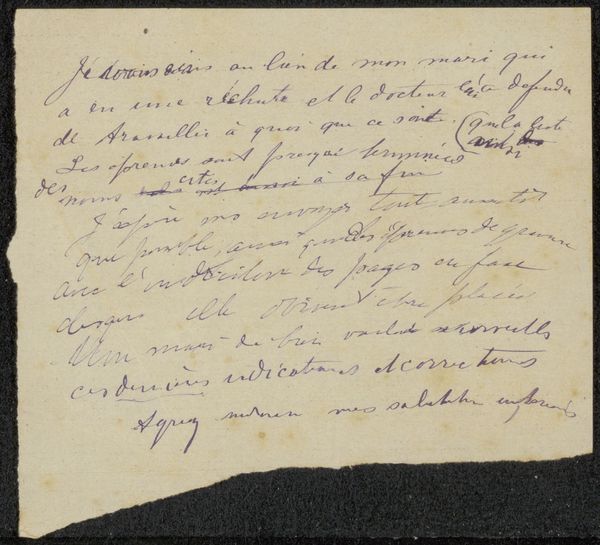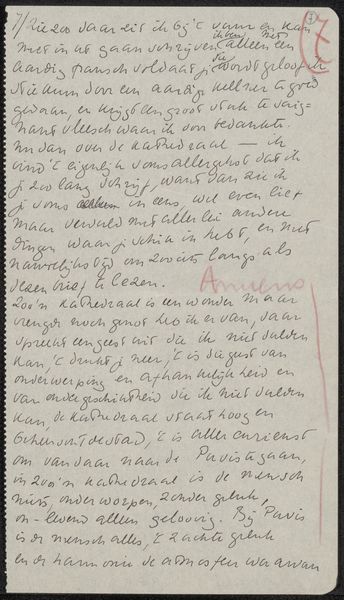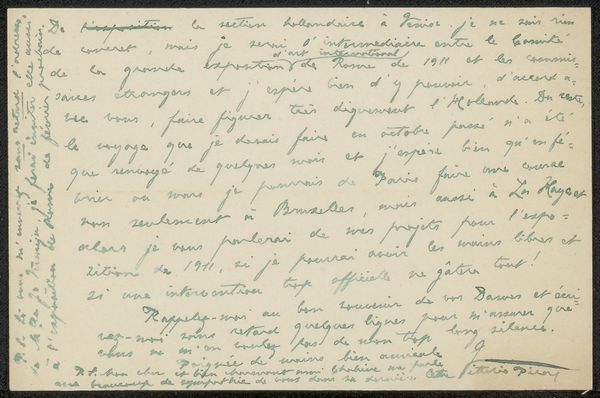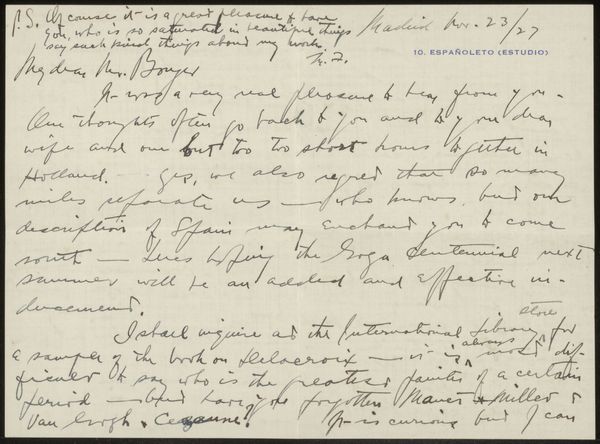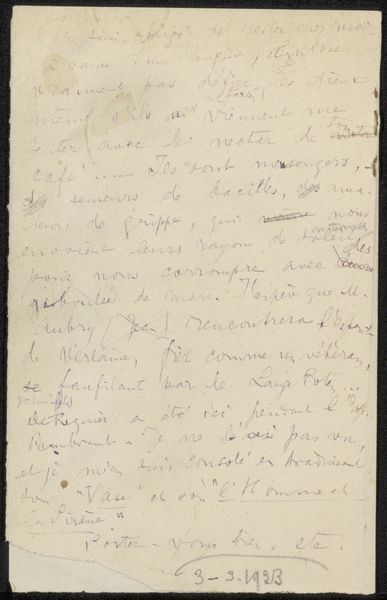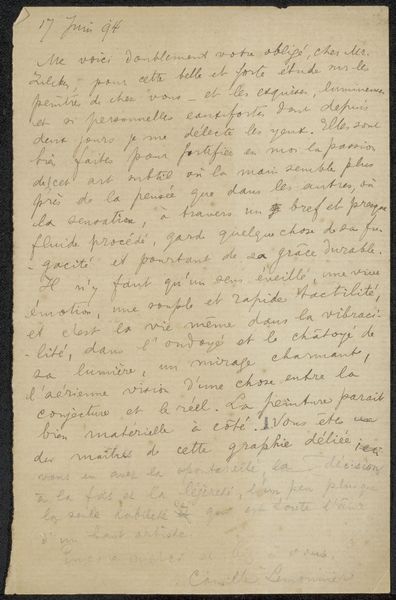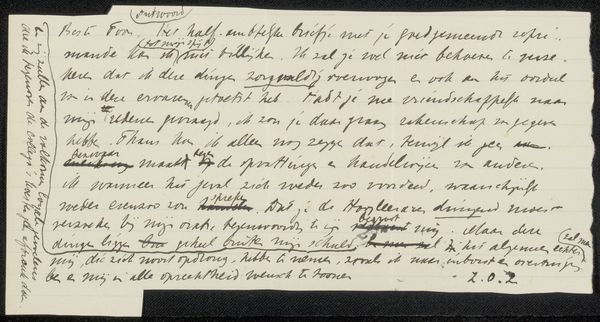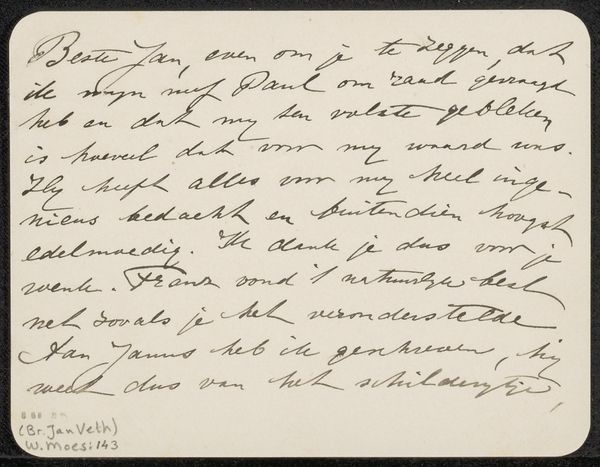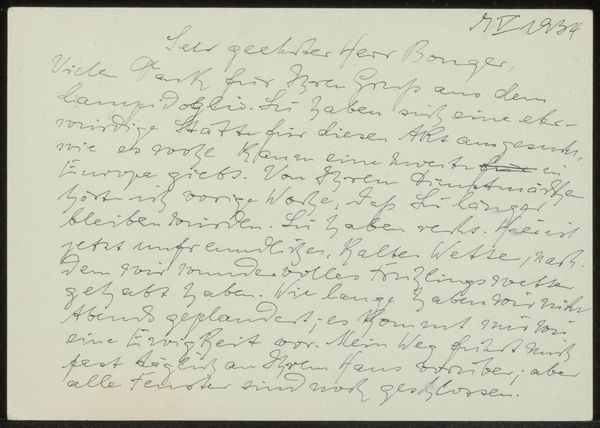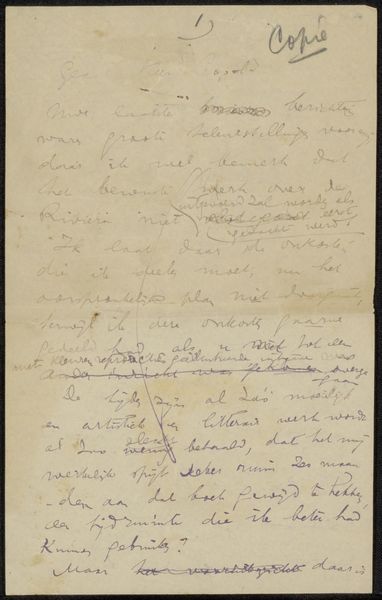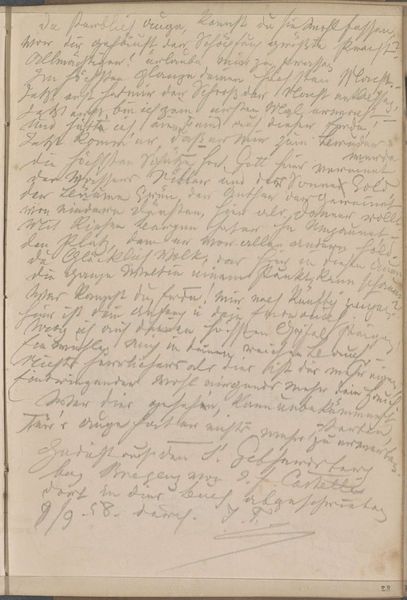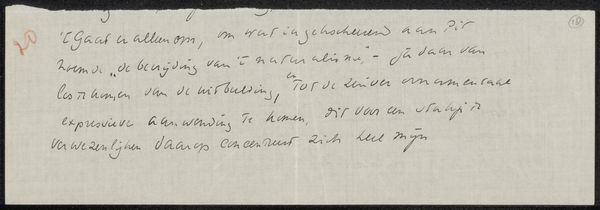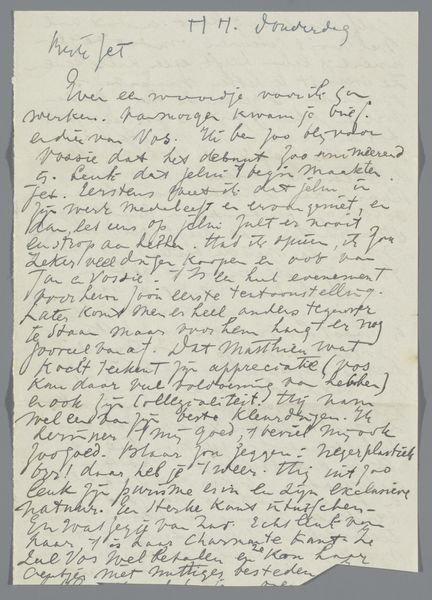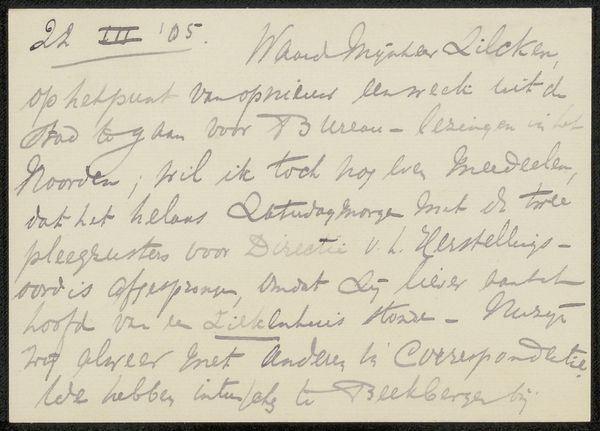
drawing, paper, ink
#
drawing
#
paper
#
ink
#
intimism
#
calligraphy
Copyright: Rijks Museum: Open Domain
Editor: So, this piece is entitled "Brief aan Philip Zilcken," possibly from 1899, made by Cornelia van der Hart using ink on paper. It looks like a handwritten note, and the script is very elegant and rhythmic. It gives off a feeling of intimacy. What do you see in this work, beyond just a letter? Curator: What I see here is a snapshot of artistic and intellectual exchange during a pivotal period. Cornelia van der Hart was writing to a colleague; how might their relative positions of power shape their communication? Was Cornelia equally recognised, exhibited, collected, or written about in comparison to Zilcken? Editor: That’s a perspective I hadn’t considered. I was mostly thinking about it as a personal communication. Curator: Personal, certainly, but even the most intimate exchanges occur within power structures. Intimacy, in fact, is always negotiated, relational. Considering Cornelia as a woman artist at the fin de siècle, her very existence was in a deeply unequal dialogue with the canon and the status quo. Do you notice how the theme is labelled 'Intimism', yet Cornelia might not have experienced this so-called "Intimism" in the same way as a male peer might? Editor: So you're saying the act of writing itself could be seen as an act of resistance or a subtle negotiation of her position? Curator: Precisely. Think about the conditions under which women were allowed, or not, to produce art, exhibit art, or communicate as professional artists. These "private" acts carry broader social weight. The letter format and choice of style are deeply meaningful when viewed in this context. Editor: That gives me a lot to consider about how we view not just this piece, but other art from this period. Thank you! Curator: My pleasure! I'm happy we could open up new layers of meaning embedded within a seemingly simple letter.
Comments
No comments
Be the first to comment and join the conversation on the ultimate creative platform.
